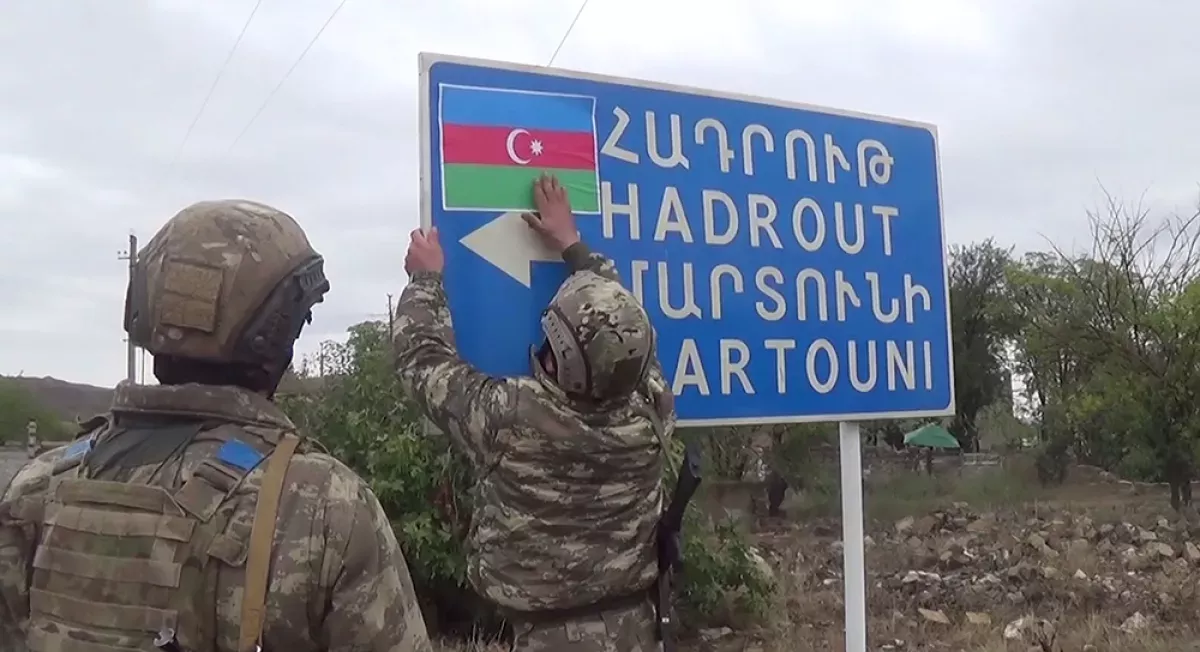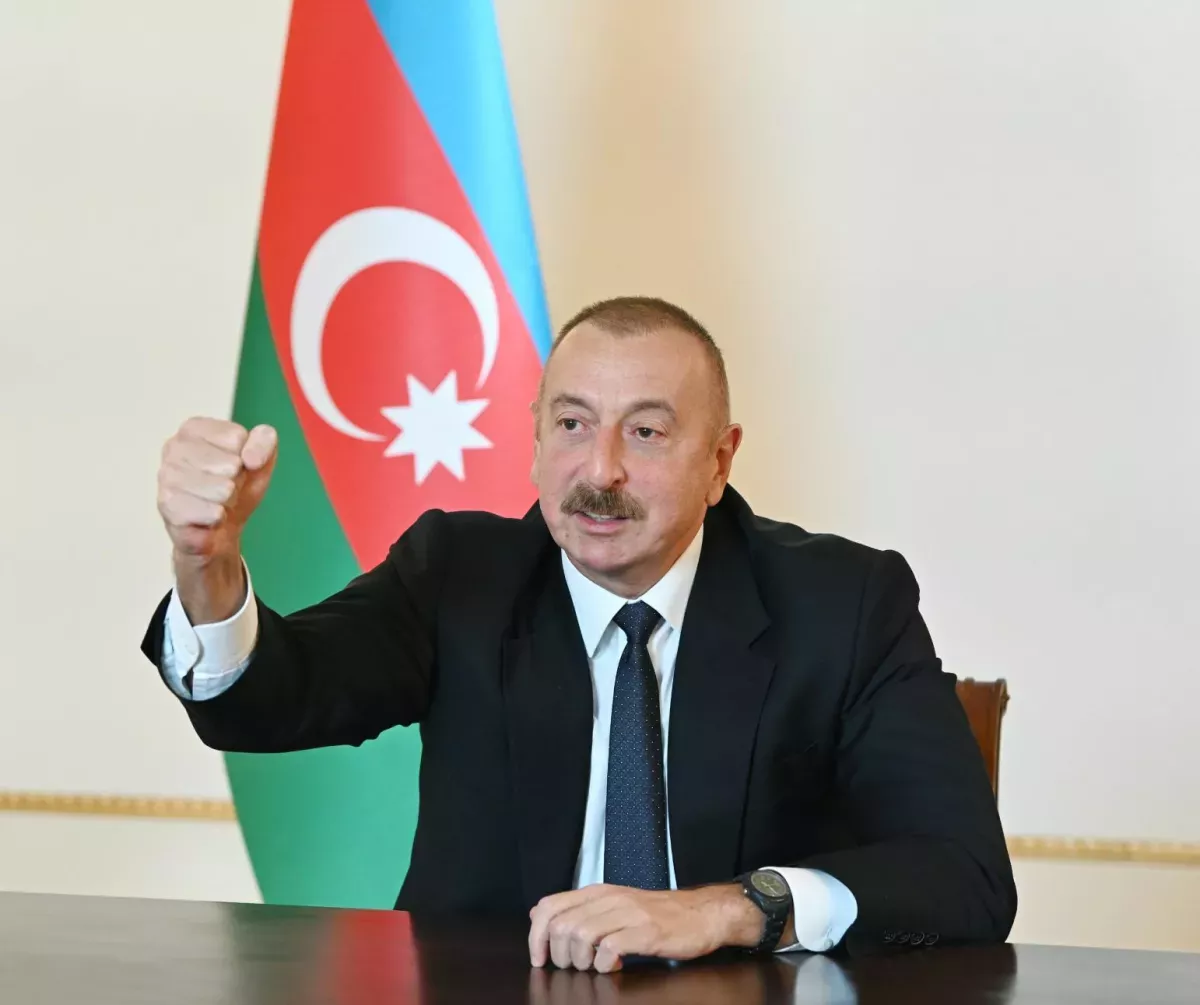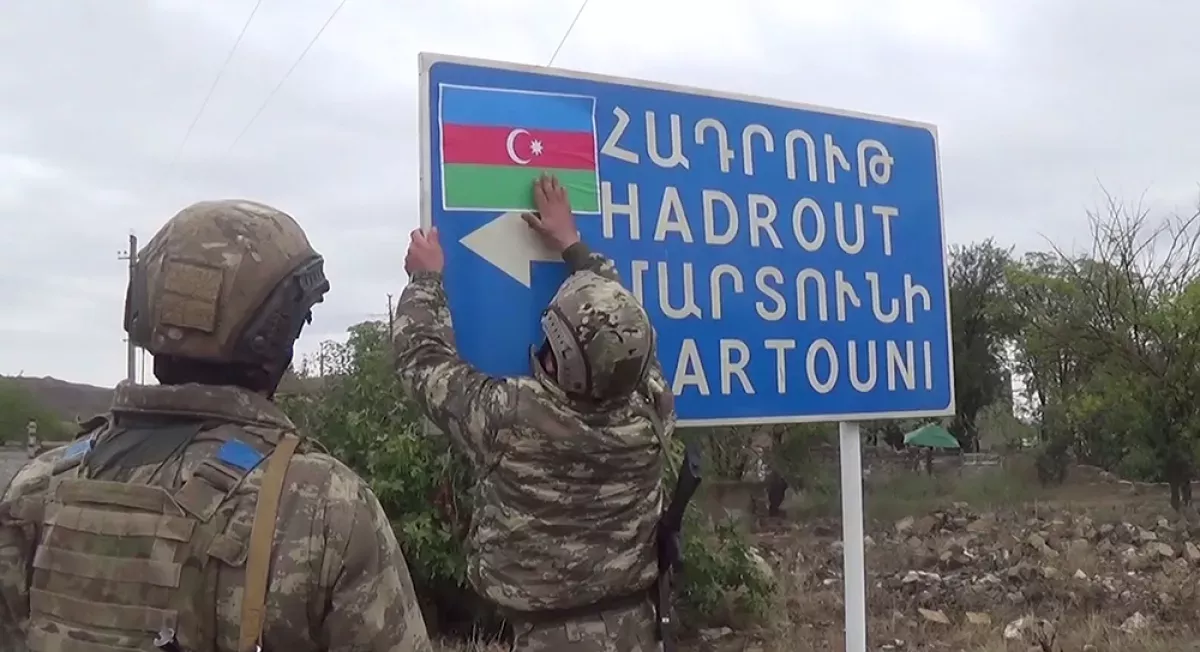The formula of breakthrough Marking five years since Hadrut’s liberation
Today marks a special date. On October 9, 2020, the Azerbaijani Army, demonstrating great heroism, achieved another glorious victory — the settlement of Hadrut in the Khojavend district was liberated from the enemy. The Special Forces (SF) of the Azerbaijani Army played a crucial role in this operation. A small SF detachment broke through the enemy’s defensive line, secured strategic heights behind the settlement, and effectively adjusted artillery fire for the motorised rifle units. After suppressing the enemy’s defences, the SF fighters completely cleared the area of enemy forces — both on the front line and in the rear.
The liberation of Hadrut played a strategically important role in ensuring command and supply for our troops in several directions, particularly in the Fuzuli and Jabrayil sectors. Moreover, the rapid advance of Azerbaijani forces further deepened the demoralisation within the ranks of the occupying Armenian army and weakened the resistance of the occupiers on other parts of the front. Following the liberation of Hadrut, the number of deserters in the Armenian army began to rise sharply, exceeding 11,000 by the end of the war.
We remember those days well. We recall how desperately Armenian official propaganda, along with sympathetic foreign media outlets, resisted acknowledging the liberation of Hadrut — among them, the most vocal was Russian war correspondent Semyon Pegov, who worked for one of Aram Gabrelyanov’s media platforms. Pegov assured the Armenian audience that “there were no Azerbaijanis in the settlement.” Not far behind him was the official representative of Armenia’s Defense Ministry, Artsrun Hovhannisyan, who on October 9 also attempted to refute President Ilham Aliyev’s earlier announcement to the nation about the liberation of Hadrut, writing on Facebook that he was “currently in Hadrut and sees only Armenians there.”

After this media fiasco, questions began to arise in Armenia: perhaps it would be better to learn about what was really happening on the front from Ilham Aliyev’s addresses? After all, everything he announced to the Azerbaijani people turned out to be true — unlike the misinformation fed to Armenian society by Tonoyan’s and Hovhannisyan’s ministries.
However, such internal resistance by the Armenian authorities to the bitter truth had its own logical explanation. It stemmed from the deep despair into which the liberation of Hadrut by the Azerbaijani Army had plunged them. After all, this event, beyond its military and historical dimensions, carried immense political significance. Hadrut was the first major settlement to be liberated within the former Nagorno-Karabakh Autonomous Oblast (NKAO). Therefore, its liberation symbolised for Armenia and its patrons the violation of the “Nagorno-Karabakh” integrity — the so-called “fortress defending itself from barbarians.” In simpler terms, it shattered the status quo that had long existed in the minds of Armenians and among the “vanguard of the world community” sympathetic to Armenian ideas.
It was not without reason that, following this success of the Azerbaijani army, Ilham Aliyev said in his address to the nation: “There is no such thing as status-quo. It is over. I have changed the status quo, I have changed it! There, on the battlefield.”

It was also no coincidence that immediately after the liberation of Hadrut, Moscow became alarmed and hastily organized negotiations between the foreign ministers of Azerbaijan and Armenia to establish a ceasefire. The continued victorious advance of the Azerbaijani Army meant that the liberation of the city of Shusha — the jewel of Karabakh and its most strategically important point dominating the entire region — was not far off.
Maintaining Armenian control over the territory of the former NKAO would have allowed Yerevan to claim that Armenians had supposedly “retaken” the regions surrounding the former autonomous oblast as a forced measure while preserving the “core.” This, in the view of both Armenians and their patrons, would have enabled future discussions about a special status for the area.
This narrative fit perfectly into the concept of “territories in exchange for status,” which the Armenian side considered “as a last resort” — that is, hypothetically, Yerevan was ready to return the regions around the former NKAO (excluding Lachin and Kalbajar districts) in exchange for Baku’s “recognition of the independence” of the former NKAO. The Hadrut operation became the first stinging slap in the face to that arrogant posture.

Ahead of the meeting between the foreign ministers of Azerbaijan and Armenia in Moscow, President Aliyev, in his address to the nation, emphasised that Armenia must accept the basic principles regarding Karabakh. However, judging by subsequent events, the Armenian leadership failed to grasp the situation and did not accept Baku’s terms.
Subsequently, no one succeeded in breaking Baku’s resolve to liberate Shusha. Only after the liberation of the jewel of Karabakh did President Ilham Aliyev order the troops to cease fire. With the return of Shusha, the status quo — in Ilham Aliyev’s sharp phrasing — was “sent to hell,” and from that moment on, no one could speculate any longer about the so-called “Nagorno-Karabakh.” It no longer existed — not only on paper but also de facto. The rest — the full restoration of Azerbaijan’s sovereignty over the entire territory of Karabakh — was only a matter of time…
Today, as in other liberated territories, large-scale construction, development, and restoration projects are rapidly underway in Hadrut, and internally displaced persons are returning to their homes.
Having become a symbol of the military and political breakthrough, Hadrut, like other settlements in liberated Karabakh, is being reborn with a new, healthy guise, becoming one of the shining pearls in the lush Karabakh landscape.








